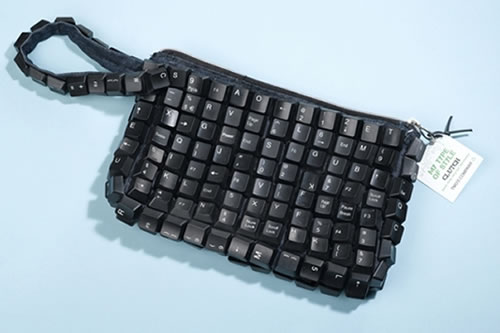My daughter, a high school student, is lightning fast at typing regardless of whether she is on a mobile device or on a traditional keyboard ( and pretty darn accurate as well). She does not however, use proper technique.
Does it matter?
Here is an interesting post by 14 year old Aubrey:
"I’ve been using the computer since I was three, and taught myself how to type.Children are capable of teaching themselves, like I had. Basically, I instant chat a lot and need a typing skill in order to reply to messages quickly.I can type 98 words per minute on average, and that is NOT a lie.However, my 8th grade Technology teacher is trying to force me to learn Traditional typing. Traditional typing is by NO means the “correct way” of typing. It’s just the most simple way to teach somebody.
Anyways.
She threatened to give me a zero everyday in Technology class until I learned to type traditional. I refuse. For all we know, Traditional typing could be the real reason behind carpal tunnel. My way of typing may even be a solution; but you can’t tell some teachers that."
 |
| When keyboards become obsolete, we can turn them into lovely handbags like this one! Interested? Purchase here |
"But if you believe that the world really isn't perfected in design yet, you might wonder why anyone is still committed to a bizarre text-input system designed to slow 'typists' on first generation manual typewriters, so that mechanical keys would not jam. More than that, you might say, "is this really the best way to record text?" Or, if you're a crazy post-modernist like myself, you might even ask, "should we ever really try to determine a best way to record text? Because, you know, we're dealing with humans here, and human capabilities and preferences tend to vary widely."
Ira Sokol
"Does it matter how we type? Yes. Touch typing allows us to write without thinking about how we are writing, freeing us to focus on what we are writing, on our ideas. Touch typing is an example of cognitive automaticity, the ability to do things without conscious attention or awareness. Automaticity takes a burden off our working memory, allowing us more space for higher-order thinking. " Anne Trubek
I have been reading blog posts and talking to others in both education and the business world. After reviewing the opinions on this topic the past few months I have to say I'm still a bit of a post sitter on this one. I can see the argument for both sides. Here are the big take-aways for me:
- Our students need to be able to keyboard efficiently in order to keep up in situations where they have to take notes and to complete tasks in a timely manner. The Middle School teachers are very frustrated with how slow our students are when completing tasks on their computers (we have 1:1 in our Middle School)
- If they are devoting a large portion of their brain power on the mechanics of keyboarding, there is less power to devote to critical thinking
- If they are fast and accurate using their own technique, power to'em
The other issue is of course, time. As with any skill you have to practice...a lot. Should we spend valuable instructional time on a skill such as this? For students in my school the answer will be no. We will be establishing WPM goals for each grade level and students will have to practice as a part of their weekly homework. Technique will be taught once a week in tech lab but in order to improve they will have to practice at home. This works for us because all of our students have home access to keyboarding practice resources. This is not a solution for underprivileged students and I'm not even going attempt addressing that in this post.
We do not have a Technology Applications course in our Middle School so the big push will be in 3rd-5th. For now, I have set a goal for all students entering 6th grade to be keyboarding a minimum of 40 WPM with a 85% accuracy. I'm not going to lie, I just pulled those numbers out of my hat. I may have to adjust once I see how they are doing this year. Although we will provide instruction on proper technique, by the time our current 3rd graders enter 6th grade, they may have developed their own style that works for them...
and I'm okay with that.
I'll keep you posted :)
